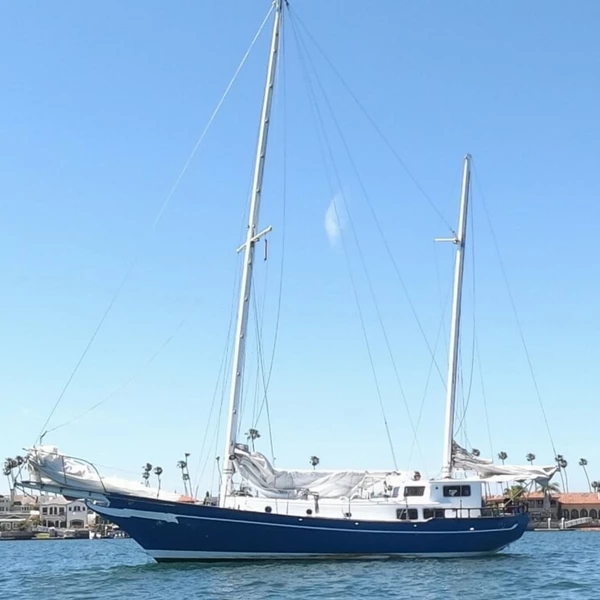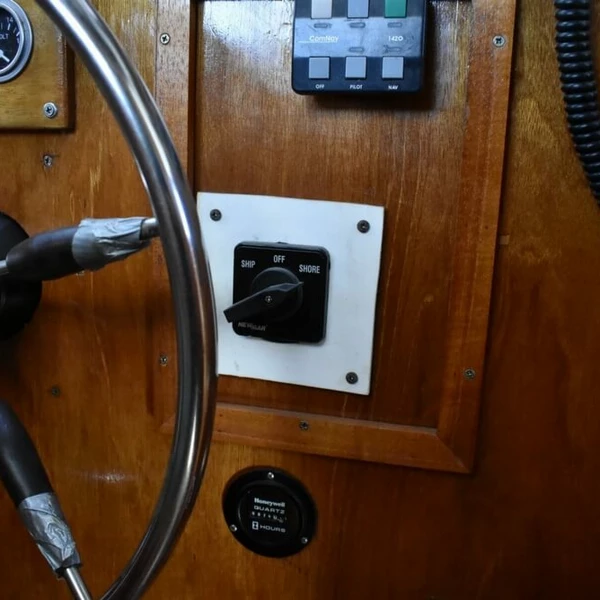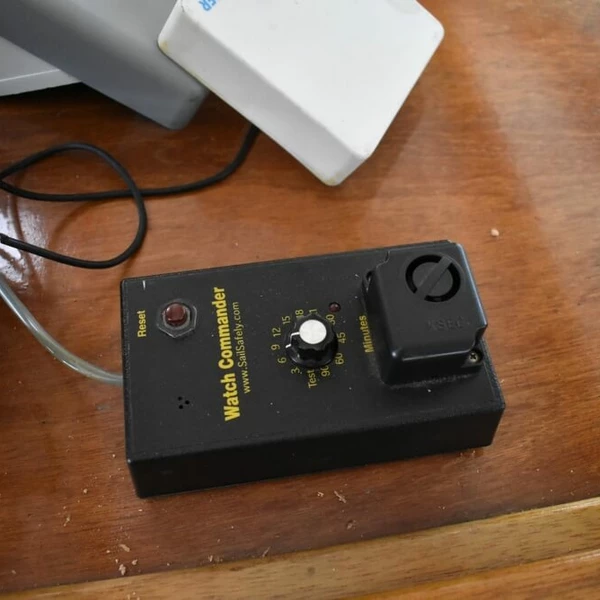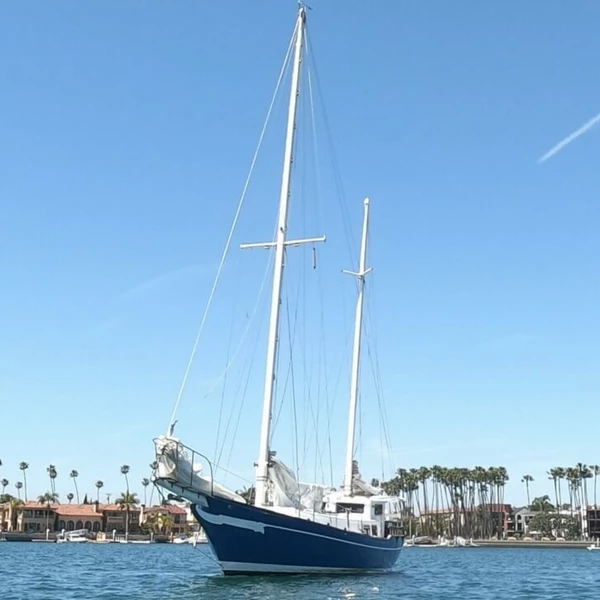Seller's Description
This Beautiful Ketch Rig is a 1972 Ta Chiao Formosa Model. These boats were built in the same shipyards that also built the CT Model of sailboat.
Its hull is reinforced fiberglass with a round bilge and full keel. She was completely rebuilt in 2012, with the purpose in mind to sail Alaska and the Pacific Northwest.
She never made it north. Instead, she cruised the entire coast of California, then made a year-long trip cruising the entire Pacific Coast of Mexico.
She has sleeping quarters for up to 6 adults, with a single head and shower. The Galley is well outfitted with a sink, microwave, Stove/oven combo, and nice sized fridge. The Fridge runs off 12 v/ 110 V and Propane. An on-demand Hot Water heater takes care of dishes and bath night.
Her electronics package consists of Sitex Chartplotter, Garmin GPSMap 440s GPS/Chartplotter, Clipper Wind Speed indicator, Standard Horizon VHF radio and ComNav Autopilot.
All lines run back to the cockpit to actually allow for single handed sailing should the need arise.
The Stern Lounge is a great place to relax under sail or on the hook. And, the bimini isn’t just to block out the sun, it’s part of a full cockpit enclosure that includes both bug screens and canvas enclosures. So, whether it’s the tropics or inclement weather, you’re covered.
What a nice boat to cruise the world with.
Specs
- Designer
- William Garden
- Builders
- Ta Chiao
- Formosa Boat Building Co. Ltd.
- Associations
- ?
- # Built
- ?
- Hull
- Monohull
- Keel
- Long
- Rudder
- ?
- Construction
- FG
Dimensions
- Length Overall
- 40′ 10″ / 12.5 m
- Waterline Length
- 31′ 11″ / 9.8 m
- Beam
- 12′ 2″ / 3.7 m
- Draft
- 6′ 2″ / 1.9 m
- Displacement
- 28,000 lb / 12,701 kg
- Ballast
- 9,200 lb / 4,173 kg (Iron)
Rig and Sails
- Type
- Ketch
- Reported Sail Area
- 780′² / 72.5 m²
- Total Sail Area
- 678′² / 63 m²
Mainsail
- Sail Area
- 322′² / 30 m²
- P
- 43′ 0″ / 13.1 m
- E
- 14′ 11″ / 4.6 m
- Air Draft
- ?
Foresail
- Sail Area
- 355′² / 33 m²
- I
- 49′ 0″ / 14.9 m
- J
- 14′ 6″ / 4.4 m
- Forestay Length
- 51′ 1″ / 15.6 m
Auxilary Power
- Make
- Perkins
- Model
- ?
- HP
- 45
- Fuel Type
- Diesel
- Fuel Capacity
- 60 gal / 227 l
- Engine Hours
- ?
Accomodations
- Water Capacity
- 120 gal / 454 l
- Holding Tank Capacity
- ?
- Headroom
- ?
- Cabins
- ?
Calculations
- Hull Speed
-
7.4 kn
Classic: 7.58 kn
Hull Speed
The theoretical maximum speed that a displacement hull can move efficiently through the water is determined by it's waterline length and displacement. It may be unable to reach this speed if the boat is underpowered or heavily loaded, though it may exceed this speed given enough power. Read more.
Formula
Classic hull speed formula:
Hull Speed = 1.34 x √LWL
A more accurate formula devised by Dave Gerr in The Propeller Handbook replaces the Speed/Length ratio constant of 1.34 with a calculation based on the Displacement/Length ratio.
Max Speed/Length ratio = 8.26 ÷ Displacement/Length ratio.311
Hull Speed = Max Speed/Length ratio x √LWL
- Sail Area/Displacement
-
13.5
<16: under powered
Sail Area / Displacement Ratio
A measure of the power of the sails relative to the weight of the boat. The higher the number, the higher the performance, but the harder the boat will be to handle. This ratio is a "non-dimensional" value that facilitates comparisons between boats of different types and sizes. Read more.
Formula
SA/D = SA ÷ (D ÷ 64)2/3
- SA: Sail area in square feet, derived by adding the mainsail area to 100% of the foretriangle area (the lateral area above the deck between the mast and the forestay).
- D: Displacement in pounds.
- Ballast/Displacement
-
32.9
<40: less stiff, less powerful
Ballast / Displacement Ratio
A measure of the stability of a boat's hull that suggests how well a monohull will stand up to its sails. The ballast displacement ratio indicates how much of the weight of a boat is placed for maximum stability against capsizing and is an indicator of stiffness and resistance to capsize.
Formula
Ballast / Displacement * 100
- Displacement/Length
-
381.9
300-400: heavy
Displacement / Length Ratio
A measure of the weight of the boat relative to it's length at the waterline. The higher a boat’s D/L ratio, the more easily it will carry a load and the more comfortable its motion will be. The lower a boat's ratio is, the less power it takes to drive the boat to its nominal hull speed or beyond. Read more.
Formula
D/L = (D ÷ 2240) ÷ (0.01 x LWL)³
- D: Displacement of the boat in pounds.
- LWL: Waterline length in feet
- Comfort Ratio
-
44.4
40-50: heavy bluewater boat
Comfort Ratio
This ratio assess how quickly and abruptly a boat’s hull reacts to waves in a significant seaway, these being the elements of a boat’s motion most likely to cause seasickness. Read more.
Formula
Comfort ratio = D ÷ (.65 x (.7 LWL + .3 LOA) x Beam1.33)
- D: Displacement of the boat in pounds
- LWL: Waterline length in feet
- LOA: Length overall in feet
- Beam: Width of boat at the widest point in feet
- Capsize Screening
-
1.6
<2.0: better suited for ocean passages
Capsize Screening Formula
This formula attempts to indicate whether a given boat might be too wide and light to readily right itself after being overturned in extreme conditions. Read more.
Formula
CSV = Beam ÷ ³√(D / 64)
- Beam: Width of boat at the widest point in feet
- D: Displacement of the boat in pounds
Notes
Also known as the YANKEE CLIPPER 41. ATLANTIC CLIPPER. Similar to CT-41, SEA WOLF 40, SEA TIGER 41.
This listing is presented by PopYachts.com. Visit their website for more information or to contact the seller.







































































































